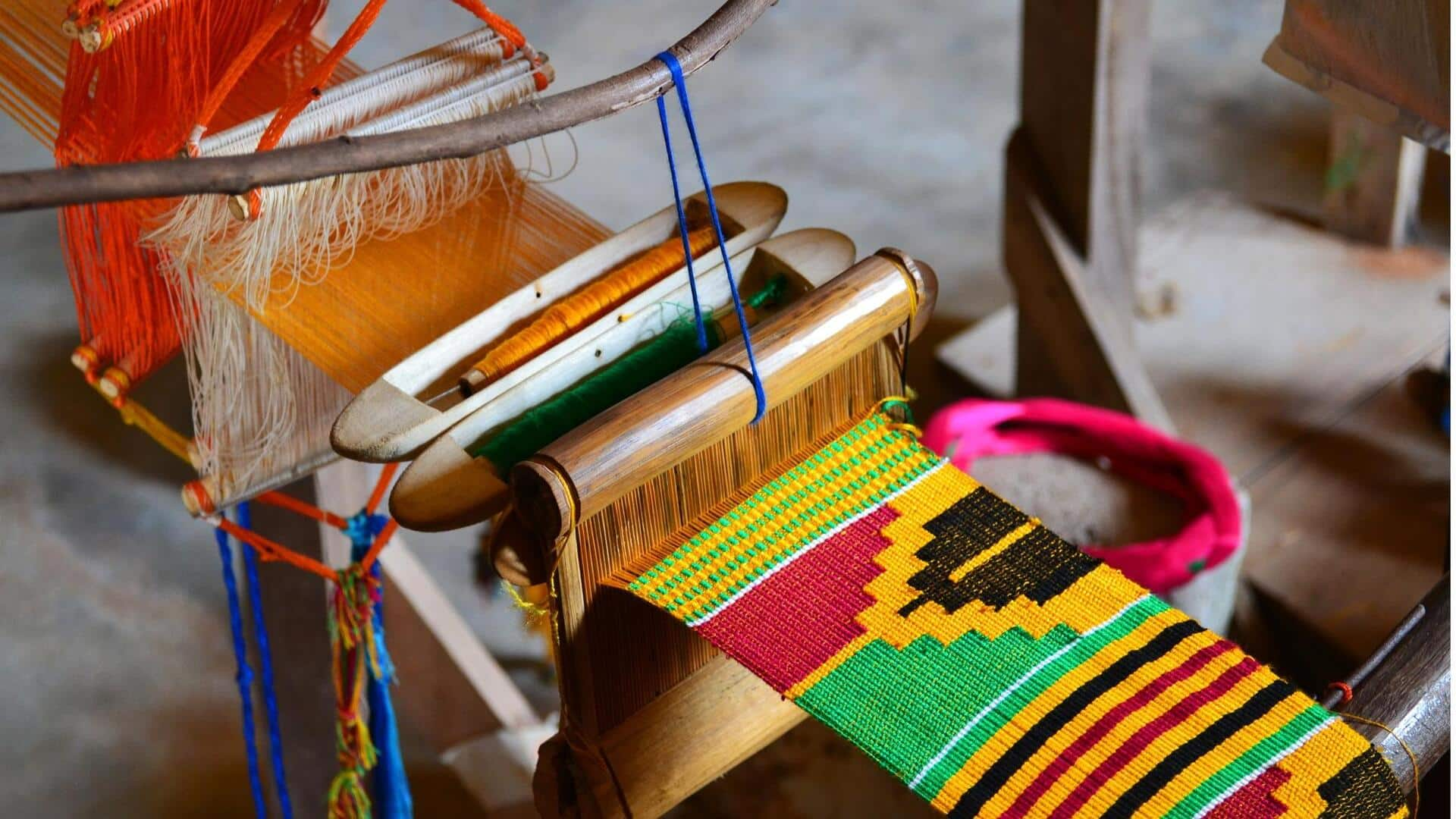
All about textile weaving
What's the story
African textile weaving is a rich tradition that reflects the continent's diversity in culture and history. Each region has its unique styles, techniques, and patterns, passed down generations. These textiles are not just functional but also carry cultural significance, often used in ceremonies and storytelling. Exploring these weaving styles offers insights into the artistry and craftsmanship of African communities.
Kente cloth
Kente cloth: A symbol of royalty
Coming from Ghana, Kente cloth is perhaps one of Africa's most popular textile. Known for its bright colors and intricate patterns, the cloth is traditionally woven by the Ashanti people, with each design carrying particular meanings associated with history, philosophy, ethics, and social values. The cloth used to be worn by royalty but has now become a symbol of African pride around the world.
Bogolan
Bogolan: The art of mud cloth
Bogolan or mud cloth is a traditional Malian fabric that is made using fermented mud to create beautiful patterns on cotton cloth. The process consists of multiple steps where artisans pattern mud on cloth before washing it off to reveal beautiful designs. Each piece narrates a story or signifies cultural symbols important to the community.
Kuba textiles
Kuba textiles: Geometric masterpieces
Originating from the Democratic Republic of Congo, Kuba textiles are famous for their geometric patterns and bold designs. Made from raffia palm fibers, Kuba textiles are traditionally woven by men, and women embellish them with embroidery or applique work. The complex designs often represent proverbs or historical events important to the Kuba people.
Adire fabrics
Adire: Indigo-dyed fabrics from Nigeria
Adire is basically indigo-dyed fabrics made by the Yoruba women of Nigeria, using resist-dyeing techniques such as tie-dyeing or starch-resist methods. These fabrics are characterized by various motifs that convey messages of social status or personal stories in Yoruba culture. Adire became popular beyond Nigeria, thanks to its unique aesthetic appeal.